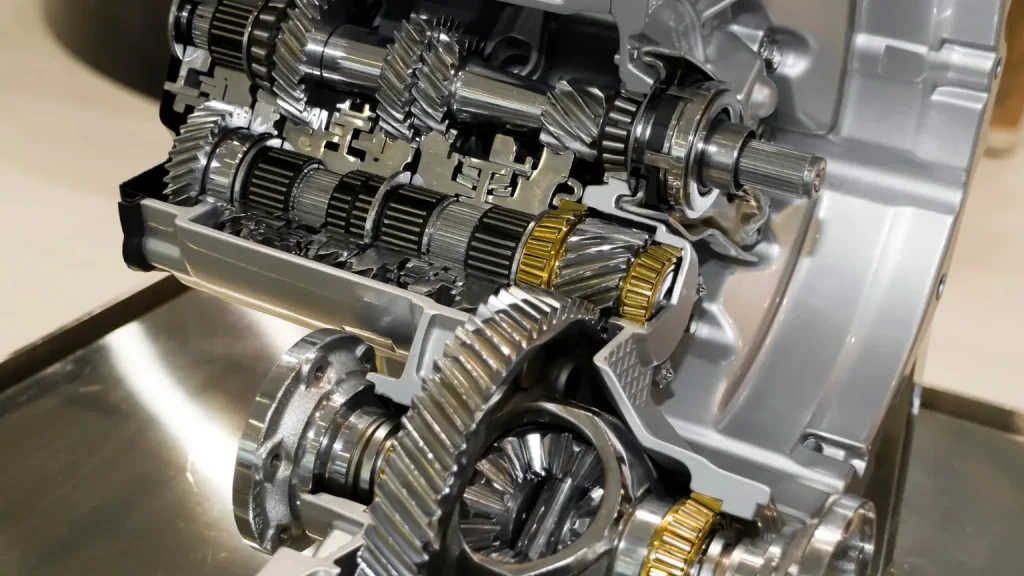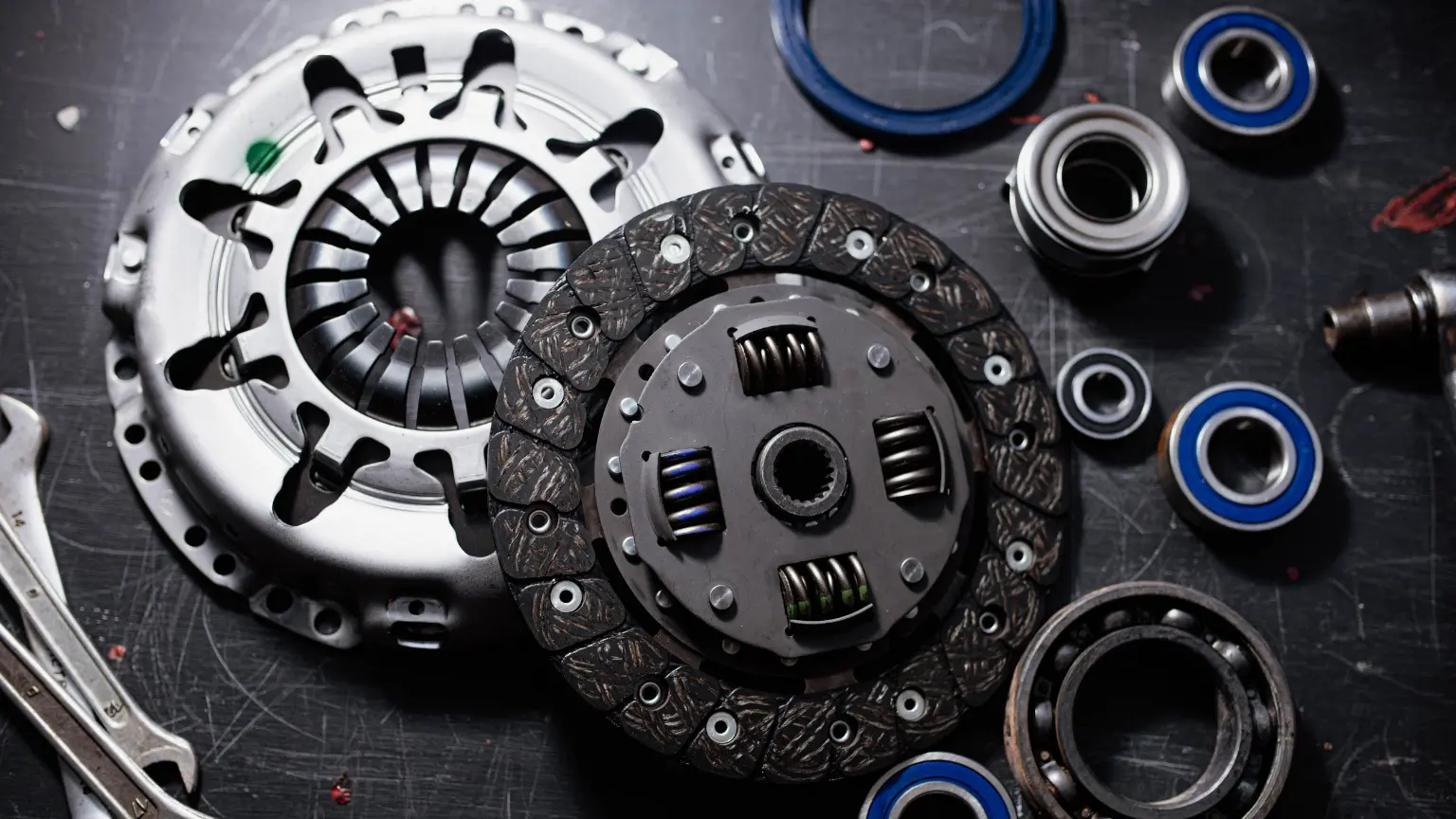Transmission Noises: What Unusual Sounds Can Reveal
Identify transmission noises—whining, grinding, clunking—as early warning signs. Use inspections, stethoscope listening, road tests and thermal checks to diagnose and avoid expensive repairs.

Understanding the sounds your vehicle's transmission makes is crucial for maintaining its health and functionality. When it begins to emit transmission noise symptoms, it often indicates underlying issues that, if left unchecked, can lead to costly repairs or even complete failure. By becoming familiar with what different noises signify, vehicle owners can take proactive steps to address small problems before they escalate. This knowledge empowers drivers to maintain their vehicle's performance and extend its lifespan, ensuring safety and reliability on the road.
Identifying Common Transmission Noises
Whining, Clunking, and Grinding
These are among the most common transmission noises that vehicle owners might encounter. A whining sound often indicates a low fluid level or a failing transmission pump, which are critical for proper transmission function. Clunking may occur when shifting gears due to worn or damaged gears. Grinding, especially in manual transmissions, typically suggests a problem with the synchronizers. Recognizing these sounds and understanding what they may mean can be the first step towards preventing further mechanical deterioration.
Automatic vs. Manual Transmission Sounds
The sounds emanating from automatic and manual transmissions can be distinctly different, making it essential to understand these differences for accurate diagnosis. Automatic transmissions might produce a humming or buzzing noise, which could suggest issues with the torque converter or fluid flow irregularities. On the other hand, manual transmissions might emit a harsher grinding noise, pointing to problems with the clutch assembly or related components.

How Noise Changes with Speed, Gear, and Temperature
Noises that intensify when accelerating or during specific gear shifts can indicate a malfunctioning transmission belt. Additionally, temperature fluctuations can affect fluid viscosity, which in turn can lead to different sounds under varying thermal conditions. Monitoring these changes helps pinpoint the exact issues affecting the transmission.
When Normal Sounds Become Warning Signs
Some transmission sounds are standard under certain operating conditions; however, any sudden or unfamiliar noises should be treated as red flags. Persistent sounds, especially those that grow louder or occur at specific intervals, should prompt a visit to top-rated transmission shops for a comprehensive check-up.
What Do Transmission Noises Mean
Linked to Internal Damage
Specific noises, such as a persistent humming or sudden jerking, are often indicative of issues like fluid contamination or imbalances in the transmission's internal mechanisms. These symptoms, if diagnosed early, can save a vehicle from severe damage, highlighting the necessity for immediate attention. Auditory cues can guide vehicle owners to seek professional assessments from transmission repair experts, preventing minor issues from escalating into major repairs.
Gearbox Bearing Symptoms
These sounds suggest that the bearings, crucial for the gearbox's smooth operation, are wearing out or inadequately lubricated. Understanding the specific sound patterns associated with bearing failure helps pinpoint the exact cause and decide on the appropriate repair strategy. Similarly, transmission bearing symptoms include unusual noises like whining or howling under acceleration. These noises generally indicate that the transmission bearings are deteriorating, which can lead to more significant transmission components' failure.
The Sounds of a Failing Transmission
Ignoring such symptoms can result in a complete transmission breakdown, leading to more expensive repairs. Vehicle owners are advised to document these noises and discuss them with a gearbox specialist to assess the transmission's condition and necessary repairs accurately.
How to Diagnose Transmission Noises Effectively
Inspection and Sound Isolation Techniques
This process involves several key steps that help isolate the noise and determine its cause. Here's a guide:
- Visual Inspection: Begin by conducting a thorough visual examination of the transmission and its surrounding components. This initial step involves inspecting the transmission case, mounting hardware, and associated components for any signs of physical damage or wear. Look carefully for indications of fluid leaks, which might manifest as stains or corrosion on the transmission housing or nearby components. Examine the condition of bolts, brackets, and mounting points to ensure that none are loose or compromised. Check for abnormal wear patterns or cracks that could suggest stress fractures or impending failure. It is crucial to document any visual discrepancies, as these can provide significant clues about internal issues that might be causing the transmission noise. In addition, inspecting the surrounding environment for accumulated dirt or debris may reveal secondary problems such as poor ventilation or contamination that could affect transmission performance.
- Listening Device Application: To isolate the precise origin of the noise within the transmission, the use of a specialized listening device, such as a mechanical stethoscope, is highly effective. This technique involves placing the stethoscope’s probe at various points along the transmission assembly while the engine is running. Carefully listen for differences in sound intensity and pitch, which can help determine if the noise originates from bearings, gears, or the torque converter. The focused auditory feedback provided by the stethoscope allows you to pinpoint subtle variations in sound that may indicate friction or misalignment of components. Combining this auditory assessment with visual cues from your inspection can help confirm whether a particular component is malfunctioning or if the noise is being transmitted through the case. A targeted approach not only refines the diagnostic process but also reduces the likelihood of misidentifying the source of the noise. The effective use of a listening device requires practice and attention to detail, as distinguishing between normal operational sounds and abnormal noise patterns is key to making an accurate diagnosis.
- Road Test: During a road test, drive the vehicle under various conditions—different speeds, load conditions, and maneuvering scenarios—to observe how the transmission behaves dynamically. Pay close attention to any noises that occur during acceleration, deceleration, or when shifting gears, as these can provide insights into whether the issue is intermittent or persistent. A well-planned road test will help reveal the relationship between the transmission’s performance and the symptoms you have already observed in the static inspection. It’s important to note any noise intensity or character changes as the vehicle warms up, since some transmission issues become more pronounced at higher operating temperatures.
- Temperature Testing: As mentioned, some transmission issues become more pronounced as the system heats up, while others may only manifest when the components are cold. Take initial readings when the vehicle is started and compare them to readings taken after the engine and transmission have reached their normal operating temperatures. This can reveal patterns in the noise, such as an increase in volume or a shift in pitch, which may indicate overheating or component stress. Using thermal imaging cameras or temperature probes can provide detailed insights into the thermal distribution within the transmission, helping to identify hotspots that may correspond to worn or damaged parts. This method is beneficial for detecting issues related to fluid viscosity or pressure changes that occur as the transmission warms up.
A comprehensive process enhances the accuracy of the diagnosis while laying the foundation for effective, targeted repairs, ensuring the long-term reliability and performance of your transmission system.
When to Involve a Transmission Repair Expert
When preliminary assessments and basic troubleshooting do not resolve the noise issues, it's time to consult a gearbox specialist. These professionals have the expertise to delve deeper into complex transmission problems that might escape routine diagnostics. Their specialized skills are particularly valuable when dealing with intricate systems like modern automatic transmissions, where experience is crucial for effective repairs.
Transmission Repair Tips and Maintenance Solutions
Preventative Steps to Avoid Costly Transmission Issues
Vehicle owners should adhere to a maintenance schedule that includes frequent checks and fluid changes to ensure their transmission operates smoothly. This preventive approach helps mitigate the risk of unexpected failures and maintains vehicle efficiency. Keeping the transmission fluid clean and at the proper level is essential, as it lubricates and cools the components, reducing wear and tear over time.
How to Choose a Trusted Transmission Repair Shop
Look for shops that hold certifications and have good reputations within the community. Online reviews and testimonials can provide insight into the shop's reliability and quality of service. Also, choose a shop specializing in transmission work rather than a general auto repair shop.
Understanding the Transmission Rebuild Process
A transmission rebuild involves completely disassembling the transmission to check each part for wear and damage. Damaged parts are replaced, and the transmission is reassembled, typically with new gaskets, seals, and often new clutch components. Understanding this process can help vehicle owners make informed decisions about whether to opt for a rebuild or a complete replacement, depending on the condition and age of their vehicle's transmission.

Using Transmission Repair Tools
Utilizing the right tools not only facilitates a more efficient repair process but also significantly enhances the reliability and longevity of the transmission after the repair. Here’s a detailed look at some of the key tools used:
- Transmission Jacks: These specialized jacks are engineered to handle a transmission's heavy weight and delicate balance, providing a secure and stable platform throughout the repair process. Their design often includes adjustable lifting arms, allowing for precise positioning to accommodate various transmission models and sizes. The use of transmission jacks minimizes the risk of injury and equipment damage by eliminating the need for makeshift lifting methods. Moreover, these jacks are built to distribute weight evenly, which helps prevent warping or damage to transmission components during removal.
- Flaring Tools: A properly flared tube ensures that fluid pressure is maintained within the system, reducing the risk of leaks that can lead to performance issues or even complete transmission failure. High-quality flaring tools are engineered to produce consistent, clean flares, which is particularly important when dealing with delicate components where even a small imperfection can compromise the seal. Using these tools, technicians can adjust the size and shape of the flare to match specific fitting requirements, ensuring a perfect fit every time.
- Linkage Tools: These specialized tools enable technicians to fine-tune the mechanical linkages that control shifting, ensuring that every component is correctly positioned and calibrated. Proper linkage alignment is crucial because even slight misalignments can lead to improper gear engagement, excessive wear, or harsh shifting, all of which compromise performance and long-term durability. Advanced linkage tools often include adjustable clamps, alignment guides, and precision measurement scales that help technicians achieve the exact specifications required by the manufacturer. Using these tools, technicians can systematically verify and adjust each linkage component, ensuring optimal interaction between the transmission and the engine.
- Bearing Pullers And Installers: During transmission repairs, bearings are often one of the first components to show signs of wear, and replacing them requires tools that can remove them without distorting the housing or the bearing itself. High-quality bearing pullers provide a controlled force that evenly distributes pressure around the bearing, making it possible to remove even those that are tightly fitted. Conversely, bearing installers are engineered to align and seat the new bearings precisely, ensuring a snug fit that minimizes play and vibration.
- Snap Ring Pliers: When a snap ring is removed or installed improperly, it can lead to misalignment or premature wear of the surrounding components, significantly affecting the transmission's functionality. High-quality snap ring pliers feature adjustable tips and ergonomic handles, allowing technicians to apply consistent pressure while maintaining a firm grip on the delicate rings. This precise control ensures that the snap ring is neither overextended nor compressed forcefully, which could compromise its integrity. The careful use of snap ring pliers is essential in preventing collateral damage during the repair process, as it minimizes the risk of scratching or distorting the grooves in which the snap rings sit.
- Torque Wrenches: Torque wrenches are a cornerstone of precision in transmission repair, ensuring that every bolt and screw is tightened to the manufacturer’s exact specifications. These tools provide the ability to apply precise force, which is critical in preventing under-tightening and over-tightening—two issues that can lead to serious mechanical failures. Under-tightened bolts may loosen over time, causing misalignment or even detachment of crucial components, while over-tightened fasteners can strip threads or damage sensitive parts. Modern torque wrenches come with digital readouts and adjustable settings, allowing for repeatable accuracy that is essential for high-stakes repairs. Using a torque wrench, technicians can methodically work through the assembly process, ensuring that every connection is secure and that the transmission’s structural integrity is maintained.
Attention to detail is crucial in transmission work, as even a small misalignment can lead to significant problems, making precision tools indispensable in the field of transmission repair.
Software Solutions
These play a pivotal role in the analysis of automotive transmission noises. These programs can analyze the acoustic data captured by sensors and compare it to known patterns of transmission issues. This type of analysis helps in isolating the noise source more accurately than ever before, providing a clear diagnosis and precise repair directives.

Comprehending the implications of different transmission sounds plays a critical role in protecting your automotive investment. By gaining knowledge about what certain sounds mean, owners can make informed decisions about the necessary actions to take, whether it’s a minor adjustment or a more significant repair. This awareness helps maintain the vehicle’s value and ensures it continues to operate efficiently.
Follow a maintenance program
Ante gravida id aenean quis egestas risus nam amet nullam leo diam diam aliquam eu eu malesuada arcu rhoncus suspendisse nulla mattis ut amet sagittis in justo egestas.

search for a trusted mechanic
Lorem ipsum dolor sit amet, consectetur adipiscing elit lobortis arcu enim urna adipiscing praesent velit viverra sit semper lorem eu cursus vel hendrerit elementum morbi curabitur etiam nibh justo, lorem aliquet donec sed sit mi dignissim at ante massa mattis.
- Neque sodales ut etiam sit amet nisl purus non tellus orci ac auctor
- Adipiscing elit ut aliquam purus sit amet viverra suspendisse potent
- Mauris commodo quis imperdiet massa tincidunt nunc pulvinar
- Excepteur sint occaecat cupidatat non proident sunt in culpa qui officia
Check the air pressure in your tires
Vitae congue eu consequat ac felis placerat vestibulum lectus mauris ultrices cursus sit amet dictum sit amet justo donec enim diam porttitor lacus luctus accumsan tortor posuere praesent tristique magna sit amet purus gravida quis blandit turpis.
Review your suspension frequently
At risus viverra adipiscing at in tellus integer feugiat nisl pretium fusce id velit ut tortor sagittis orci a scelerisque purus semper eget at lectus urna duis convallis. porta nibh venenatis cras sed felis eget neque laoreet suspendisse interdum consectetur libero id faucibus nisl donec pretium vulputate sapien nec sagittis aliquam nunc lobortis mattis aliquam faucibus purus in.
- Neque sodales ut etiam sit amet nisl purus non tellus orci ac auctor
- Adipiscing elit ut aliquam purus sit amet viverra suspendisse potent
- Mauris commodo quis imperdiet massa tincidunt nunc pulvinar
- Excepteur sint occaecat cupidatat non proident sunt in culpa qui officia
Service your vehicle as regularly as posible
At risus viverra adipiscing at in tellus integer feugiat nisl pretium fusce id velit ut tortor sagittis orci a scelerisque purus semper eget at lectus urna duis convallis. porta nibh venenatis cras sed felis eget neque laoreet suspendisse interdum consectetur libero id faucibus nisl donec pretium vulputate sapien nec sagittis aliquam nunc lobortis mattis aliquam faucibus purus in.
“Nisi quis eleifend quam adipiscing vitae aliquet bibendum enim facilisis gravida neque velit euismod in pellentesque”
Conclusion
Eget lorem dolor sed viverra ipsum nunc aliquet bibendum felis donec et odio pellentesque diam volutpat commodo sed egestas aliquam sem fringilla ut morbi tincidunt augue interdum velit euismod eu tincidunt tortor aliquam nulla facilisi aenean sed adipiscing diam donec adipiscing ut lectus arcu bibendum at varius vel pharetra nibh venenatis cras sed felis eget.


